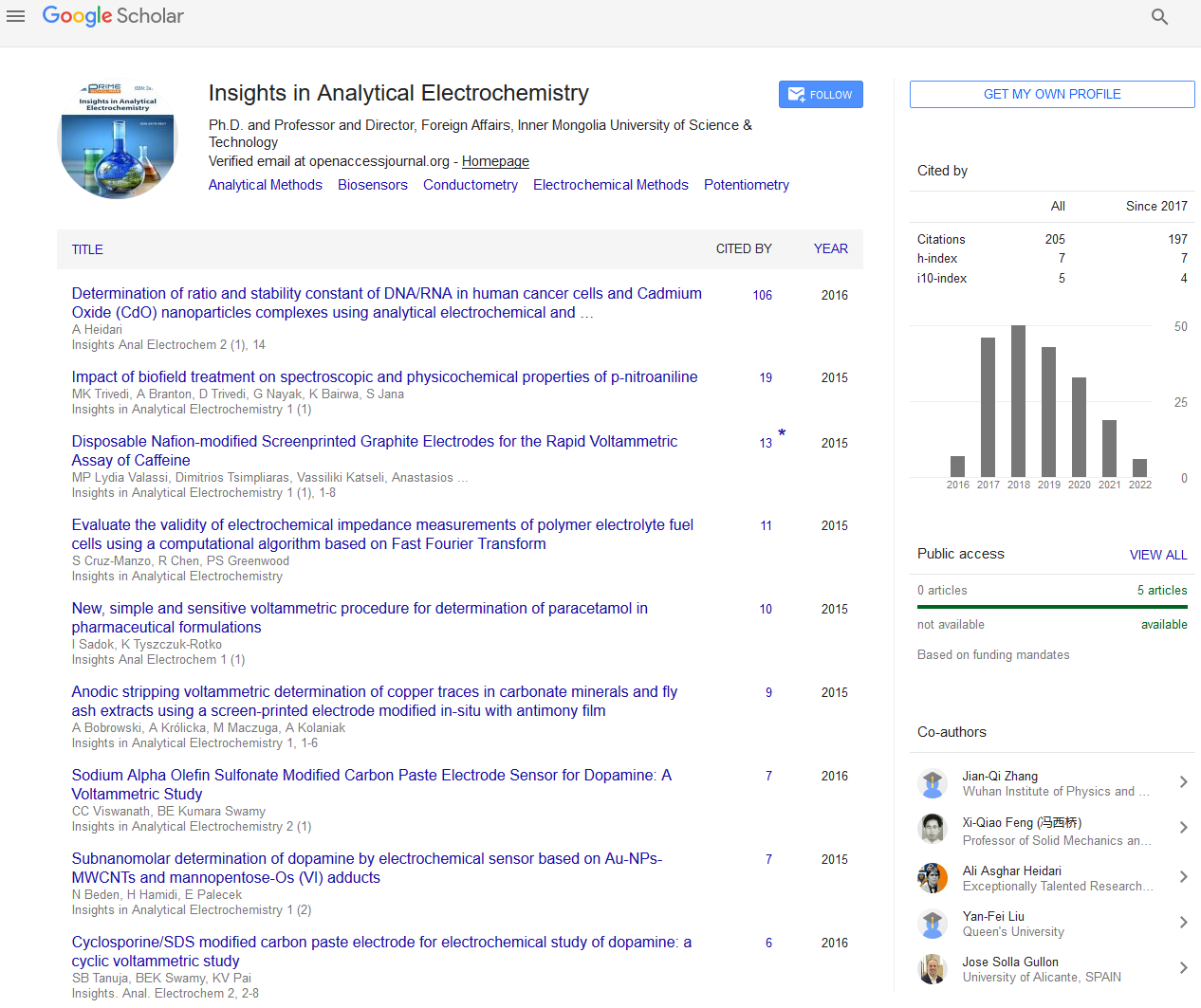Commentary - (2024) Volume 10, Issue 2
Electrochemistry: The Dance of Electrons and Molecules
Maurice Roeves*
Department of Chemical Engineering, Hunan Normal University, China
*Correspondence:
Maurice Roeves,
Department of Chemical Engineering, Hunan Normal University,
China,
Email:
Received: 29-May-2024, Manuscript No. IPAEI-24-20789;
Editor assigned: 31-May-2024, Pre QC No. IPAEI-24-20789 (PQ);
Reviewed: 14-Jun-2024, QC No. IPAEI-24-20789;
Revised: 19-Jun-2024, Manuscript No. IPAEI-24-20789 (R);
Published:
26-Jun-2024, DOI: 10.36648/2470-9867.24.10.14
Description
In the realm where chemistry meets electricity,
electrochemistry emerges as a captivating dance of electrons
and molecules, orchestrating reactions that power our
modern world and inspire future innovations. At its heart
lies the fundamental principle of oxidation-reduction redox
reactions, where electrons shuttle between species, driven by
potential differences across electrodes immersed in conductive
solutions known as electrolytes. This intricate choreography
of electron transfer not only underpins essential processes
like battery operation and metal plating but also holds
promise for revolutionizing fields ranging from medicine to
environmental conservation. Redox reactions, the backbone of
electrochemistry, unfold as a narrative of transformation. At the
anode, oxidation relinquishes electrons, while at the cathode,
reduction welcomes these electrons, creating a flow of electric
current that powers devices and drives chemical changes. This
interplay between gaining and losing electrons, mediated by
electrodes and electrolytes, forms the basis of electrochemical
cells a cornerstone of energy storage technologies and
electroplating processes essential in manufacturing and
aesthetics. The practical applications of electrochemistry span
a vast spectrum of industries and technologies. Batteries, for
instance, epitomize the harnessing of electrochemical principles
to store and deliver energy efficiently. From ubiquitous
lithium-ion batteries powering smartphones to cutting-edge
advancements in solid-state batteries for electric vehicles,
electrochemistry plays a pivotal role in shaping the future of
energy storage. Similarly, fuel cells exemplify the elegance
of electrochemical energy conversion, where hydrogen and
oxygen react to produce electricity and water, offering a clean
alternative to fossil fuel combustion in transportation and
stationary power generation. Beyond energy, electrochemistry
enriches fields as diverse as healthcare and environmental
science. Electrochemical sensors, leveraging the sensitivity
of electron transfer reactions, detect minute quantities of
analytes in biological fluids, pollutants in air and water, and
toxins in food, enabling precise diagnostics and environmental
monitoring. This capability holds transformative potential
in disease prevention, pollution control, and ensuring food
safety. Looking ahead, electrochemistry continues to evolve
through innovative materials, processes, and applications.
Advanced electrode materials, such as nanomaterial and 2D
materials like graphene, promise enhanced performance in
batteries and super capacitors enabling faster charging times,
longer cycle lives, and higher energy densities. Electrochemical
CO2 reduction represents a frontier in sustainability, aiming
to convert carbon dioxide into valuable fuels and chemicals,
contributing to climate change mitigation and carbon neutrality
goals. Moreover, the integration of electrochemical techniques
with biotechnology opens new avenues for biomedical
research and therapy. Bio electrochemistry explores the
interface between biological systems and electrochemical
processes, advancing fields like neurochemistry, biosensors,
and targeted drug delivery systems. These synergies hold
promise for personalized medicine, regenerative therapies,
and understanding complex biological mechanisms at the
molecular level. In conclusion, electrochemistry stands as a
dynamic field at the crossroads of science, engineering, and
innovation. By unravelling the intricate dance of electrons
and molecules, researchers and engineers continue to unlock
new possibilities from sustainable energy solutions and
environmental remediation to transformative healthcare
technologies. As we navigate towards a future shaped by
technological advancements, electrochemistry remains a
guiding light, illuminating pathways to a cleaner, healthier, and
more interconnected world.
Acknowledgement
None.
Conflict Of Interest
The author’s declared that they have no conflict of interest.
Citation: Roeves M (2024) Electrochemistry: The Dance of Electrons and Molecules. Insights Anal Electrochem. 10:14
Copyright: © 2024 Roeves M. This is an open-access article distributed under the terms of the Creative Commons Attribution License, which permits unrestricted use, distribution, and reproduction in any medium, provided the original author and source are credited

